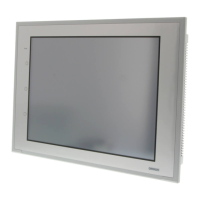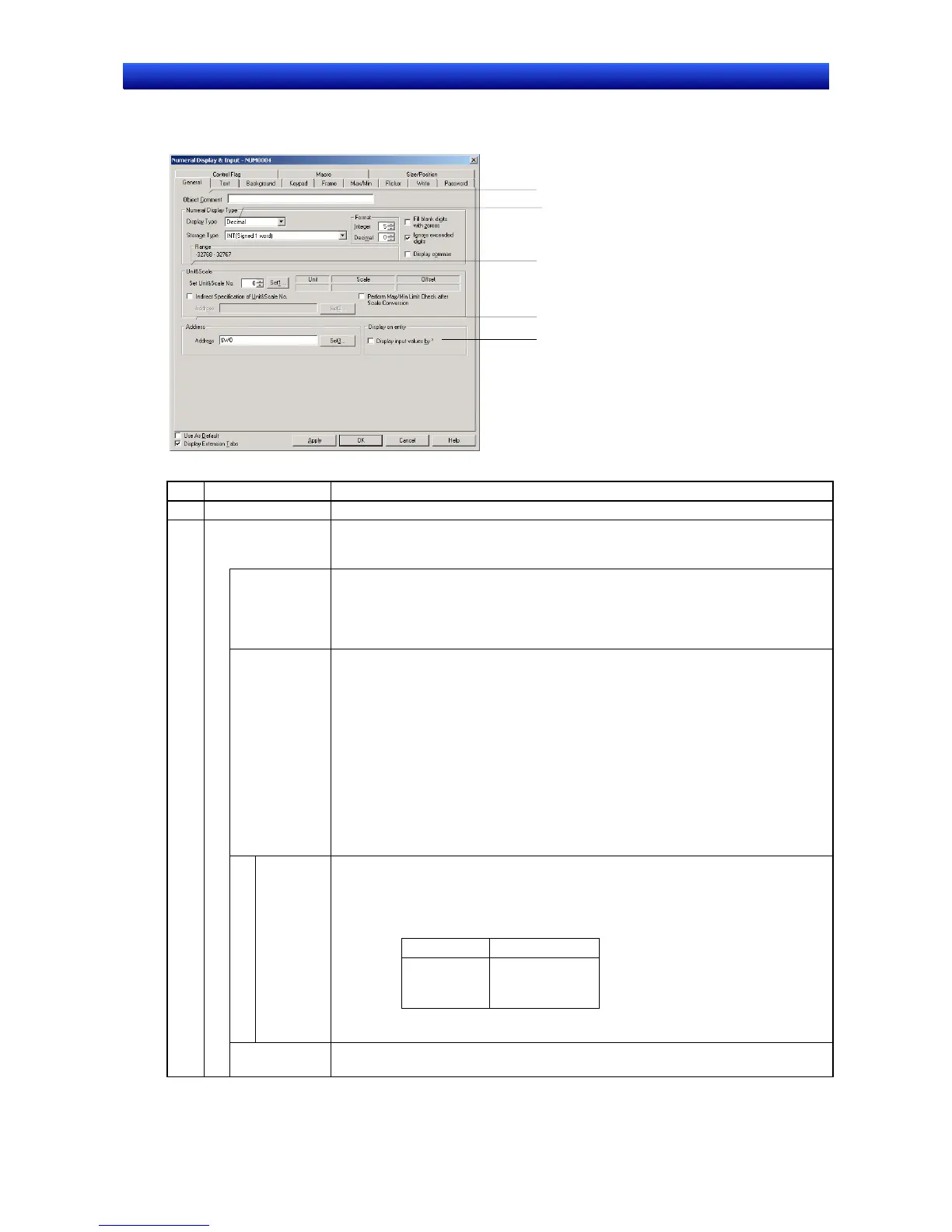Section 2 NS Series Functions 2-12 Display and Input Objects
2-241
NS Series Programming Manual
General Tab Page
Sets the address and numeral display type and units.
1
3
4
5
2
No. Setting Details
1 Object Comment Sets an explanatory comment for the pasted object. (Up to 32 characters.)
2 Numeral display
type
Various numeral displays can be set through a combination of display and storage
types. Refer to Numeral Display and Storage Type (General Tab) in 2-8 Common
Functional Object Functions for details on numeral display and storage types.
Display type Select from the following 4 display formats.
Decimal
Hexadecimal
Binary
Octal
Storage type Select from the following 11 storage formats.
INT (See note 1.) signed, 1 word
UINT unsigned, 1 word
DINT (See note 1.) signed, 2 words
UDINT unsigned, 2 words
REAL (real number) (See note 1.)
BCD2 (See note 1.) unsigned, 1 word
BCD2 (See note 1.) unsigned, 2 words
BCD1 signed (leftmost digit: F), 1 word (See note 1.)
BCD1 signed (leftmost digit: F), 2 words (See note 1.)
BCD2 signed (leftmost bit: 1), 1 word (See note 1.)
BCD2 signed (leftmost bit: 1), 2 words (See note 1.)
Specifies the number of display digits for integers and decimals. The numeral dis-
play can be changed to any format. Fractions can only be set when Decimal is se-
lected as the display format.
Example: When set to 2 integer digits, 1 decimal place, and to not ignore extra dig-
its:
Actual value Numeral display
9.51
99.51
999.51
9.5
99.5
999.5
Format (1See note 2.)
Integer
Decimal
As shown in the above table, only the decimal fraction is rounded off to the specified
number of digits.
Fill blank digits
with zeros
Inserts zeros to fill the specified number of display digits. For example, if the num-
ber of display digits is set to 4 and the value is 1, the display will be 0001.

